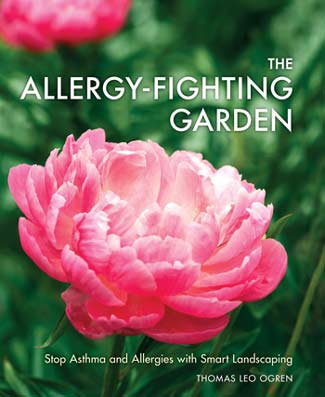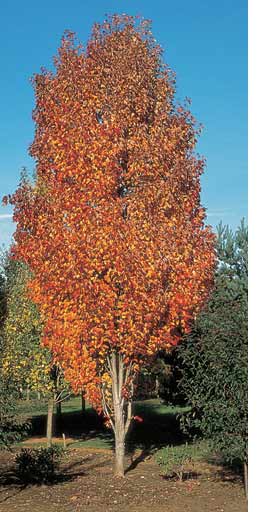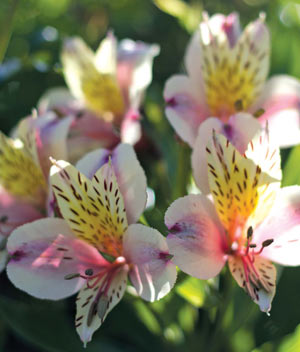|
|
|
The Allergy
Fighting Garden
by Tom Ogren Stop Asthma and allergies with smart landscaping
Buy "The Allergy-Fighting Garden" from Amazon UK for £14.91
Estimates vary but allergic rhinitis The population health implications, not to mention the economic cost, of this virtual epidemic are massive; misery, on-going poor health and lost opportunities for millions; billions of pounds or dollars in health care and working days lost. And in mortality terms, research in Holland in 2000 suggested that deaths from heart disease, lung disease and pneumonia, climb by between 5% and 17% on days with peak pollen counts. Tom Ogren's new book, The Allergy Fighting Garden, tackles the problem head on, blaming the epidemic rise in the incidence of hay fever primarily on town planners: In the early years of horticulture, most landscape plants were propagated by seed, and therefore male and female plants in the landscape were roughly 50-50, as naturally occurs in the wild. With the advent of powerful new rooting hormones, bottom heat, automatic mist and fogging systems, and controlled atmosphere greenhouses, clonal (asexual) woody plant propagation became much easier, quicker, and cheaper, and it allowed growers to produce separate-sexed (male or female) plants of their choosing. This is not the first time that Tom Ogren has addressed this problem – indeed he has been a crusader for low allergen gardening for the last thirty years and, finally, his views are beginning to gain traction. Pollen control ordinances that prohibit the sale or planting of the most allergenic trees are being considered, or have already been implemented in cities such as Albuquerque, Las Vegas; Edmonton and Toronto in Canada, and Christchurch and Auckland in New Zealand. But although much of his new book is addressed to town planners and city landscapers, Tom maintains that individual hay fever sufferers, even if they live in an area rife with male trees, can do a lot to improve their own lot. You may wonder whether what you plant in your own yard can make any difference, because pollen can blow in from hundreds of miles away. But what you plant in your own yard most likely will make all the difference in the world. With pollen allergies, everything is in the actual dose received. If you have a headache and take two aspirin it will be just fine, but if you take twenty or thirty aspirin it will be terrible. It is the same thing with exposure to allergenic pollen; a small amount of pollen might well actually even be good for you, it would probably stimulate your immune system. But a very large overdose of pollen will quickly make many people ill. The closer you are to the source of the pollen, the greater your exposure will be. It is well understood by many allergists that if someone is allergic to, say, six things, and three of them are removed, then the sufferer will often become symptom-free. This is an important insight. By creating an allergy-free yard, you will have eliminated the closest, most intense sources of what ails you. Even though your body will contact some allergens from outside your own area of control, your symptoms will probably diminish and sometimes they'll disappear....... .....As with so many things, allergy is usually a question of degree. So, with some safer trees in the garden, you might well have remained symptom-free. Planning and creating a safer garden, either for you or for your city has been made hugely much easier by Tom's development, over the 30 years that he has been studying the subject, of OPALS (the Ogren Plant Allergy Scale). OPALS is a comprehensive catalogue of over 3,000 plants – from alpine creepers to hundred-foot trees – rated on a scale of 1 to 10 for their allergenicity. Whatever you wish to plant, the OPALS scale will provide you with a rating which will allow you to plan a garden or a landscape that will minimise your allergen load.
It is the OPALS ratings that make up the majority of the Allergen Fighting Garden – a true plant allergen encyclopedia, complete with many illustrations and much advice, both on using the plants and using other devices (such as high hedges) to protect yourself from your neighbour's or your city's allergens. The book is a 'must buy' for any hay fever sufferer with gardening aspirations or for any gardener who suffers from hay fever – and it should be required reading for all landscape gardeners, architects who wish to dabble in landscape – and, most especially, town planners! The Allergy-Fighting Garden Buy "The Allergy-Fighting Garden" from Amazon UK Articles on allergen-free gardening
|


 The major shift came in the 1960s and 1970s when Dutch elm disease (DED) struck and killed off millions of American elm trees...... DED struck first in the east, and then spread westward over the next decade. The trees that replaced the elms were more often than not these new, "improved" cultivars, male trees, many of which were developed by the USDA. They were first planted in massive numbers in eastern cities, and the eastern cities were the first ones to experience the sudden surge in urban allergies. Eventually, these replacement male trees were planted coast to coast, and as the ones in the west matured (and started to shed pollen), the west started to catch up with the east in the high percentages of people suffering from allergies.
The major shift came in the 1960s and 1970s when Dutch elm disease (DED) struck and killed off millions of American elm trees...... DED struck first in the east, and then spread westward over the next decade. The trees that replaced the elms were more often than not these new, "improved" cultivars, male trees, many of which were developed by the USDA. They were first planted in massive numbers in eastern cities, and the eastern cities were the first ones to experience the sudden surge in urban allergies. Eventually, these replacement male trees were planted coast to coast, and as the ones in the west matured (and started to shed pollen), the west started to catch up with the east in the high percentages of people suffering from allergies. It will also allow you to choose between a multiplicity of colourful and interesting plants – a far cry from the perception that low allergen plants are boring plants! You may not be able to grow too wide a range of grasses but there are many hundreds of other plants which will allow you create exciting, interesting and colourful spaces.
It will also allow you to choose between a multiplicity of colourful and interesting plants – a far cry from the perception that low allergen plants are boring plants! You may not be able to grow too wide a range of grasses but there are many hundreds of other plants which will allow you create exciting, interesting and colourful spaces. 










